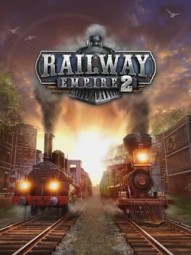Beginners Guide for Railway Empire 2 on Nintendo Switch
Beginners Guide
GuidesYou are in charge of running your own railway company. Running a railway company is met with daily challenges you can avoid with proper planning and some in-play game basics.
Trains run on tracks, and the layout of your tracks is one of the most important beginning aspects of establishing a successful railway route. There are enormous expenses incurred with building railways, and you must remember several rules when establishing a line between stations.
Finding and using the shortest path is essential when building a railway between two stations. You can do this by building railways in straight lines where possible and by avoiding winding routes.
Once you know the best possible route between stations, you can start plotting the route and adjust the tracks to accommodate the faster train speeds. Trains can travel the fastest on flat terrains, something to bear in mind when plotting your tracks.
Turning on the contour lines under the setting menu before you begin laying down your tracks will give you an idea of the terrain you’ll be working with. Building a single track will limit the bandwidth, so it’s best always to try and build double-track lines.
You must also build tracks between different industrial buildings and city stations. Don’t forget to indicate the direction of the railway by building a panel or setting movement directions. Each settlement produces specific goods, and raw materials must be supplied to industrial buildings.
You can identify the demand by clicking on the town's name and going to the “Goods Supply and Demands” option. It’s best to check the cities' demands as, over time, they will expand, and their demand for certain supplies will increase.
Building warehouses form part of the integral demand and supply chain between stations, as trains loaded with items will deliver them to the nearest station. Goods are offloaded at warehouses, and interlinking trains can load the goods from warehouses to supply distant cities.
You can prioritize goods or supplies in urgent demand by going to the panel of lines at the upper left corner of your screen, selecting the route you are searching for, and making some changes.
Railways are not only used for supplying goods and services. They are used to carry passengers. It’s okay to use multiple-purpose cargo and passenger trains at the beginning of your game; however, it's best to separate cargo and passenger trains.
Trains will break down occasionally and need service buildings to mend them. Build maintenance depots at all your stations to automatically repair your trains and prevent them from breaking down.
Lastly, trains need oil, coal, and sand to run effectively. You will need to replenish each train's resources regularly. Building a supply tower on the tracks will fill a train’s deleting resources to keep them moving.




